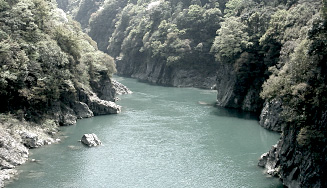
Sosuikyo
Sosuikyo is located downstream of the Maruyama Dam. One of the three Kiso rivers passes through it and there are 36 popular viewpoints along it. The top of the canyon is several hundred meters high and is the result of erosion caused by the Kiso River's flow. It provides a breath-taking view of the area. Reservations for accommodations are handled by the Pulala Town Office near the canyon and visitors can take advantage of a 10.5km hiking trail to bask in the natural wonders of the area.
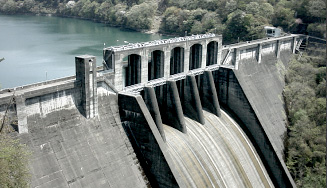
Maruyama Dam
The dam was completed in the spring of 1954 and is 98.2m high and 260m in length, boasting a capacity of 79.52 million tons. In addition to hydroelectric power generation, the dam guards against flooding by adjusting water levels. The spring cherry blossoms, summer greenery and fall colors along it attract many visitors throughout the year. It is also a popular spot for carp and other fresh water fishing.
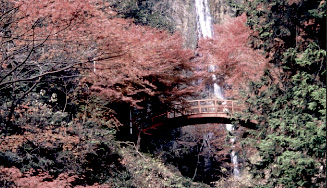
Goho Waterfall
This is a rather unusual three-tier waterfall. The first fall drops 44 meters, the second, another 23 meters and the last, a final 13 meters to yield a total of 80 meters. Its flow is both quiet and leisurely, reminiscent of a hula dancer's graceful movements. The hiking course passes by all three falls and adds Enmei Falls and Niten Falls, which are featured in the legend of Miyamoto Musashi archived at Yaotsu-cho's famous Daisenji temple.
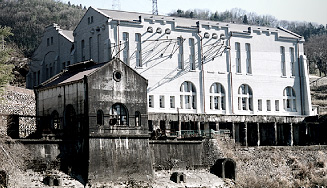
Old Yaotsu Power Plant
Stately and modernistic design converge in the architecture of the building. It is the oldest power plant on the Kiso river, having been built in 1911. The building is a brick and mortar structure with the generator in one wing and the transmission facilities in the other. Copper diagonal roofing covers the generator wing. The building was classified as the first Industrial Cultural Treasure by Gifu prefecture and has been recognized as a National Important Cultural Asset. It currently serves as a museum.
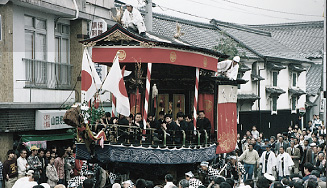
Yaotsu Festival
The festival is held each year over two days, with the preliminary events taking place on the first day and the main festival celebration on the second Sunday of April - all centered on the Ofuna Shrine honoring the local guardian Ubusunagami gods of Yaotsu.
Three floats joined together form a magnificent river boat, are pulled out to wend their way through the town. The beautiful and elaborately decorated magnificent floats are pulled by men intent on showing off their prowess and strength in guiding the immense heavy float to the time of their rallying chants, creating an atmosphere of power so great that the festival is also known as the 'Fighting Festival'.
The Yaotsu Danjiri Matsuri dates back to the Genroku Period (1688 - 1704) and is strongly reminiscent of the river transport that was prevalent then.
The construction of the floats, which have no other equal in the Chubu region, as they are joined together using only wisteria vines without spikes or nails is in itself a sight well worth watching. The loud cheers and shouts of the people gathered to watch the float make its way through the town adds to the excitement of the festival.
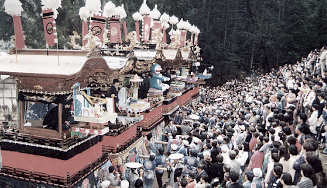
Kutami Festival
The festival is held on the third Sunday in April to worship the local gods at the Shinmei and Shirahige Shrines. Six elaborately decorated elegant floats are pulled out into the open, making a grand appearance. Unique puppet shows unfold on the stages set on the floats. The secret underlying the puppets' movements relies on a special method of operation known as 'itokiri karakuri', or 'string-cutting', which has received great acclaim for its historical and artistic value.